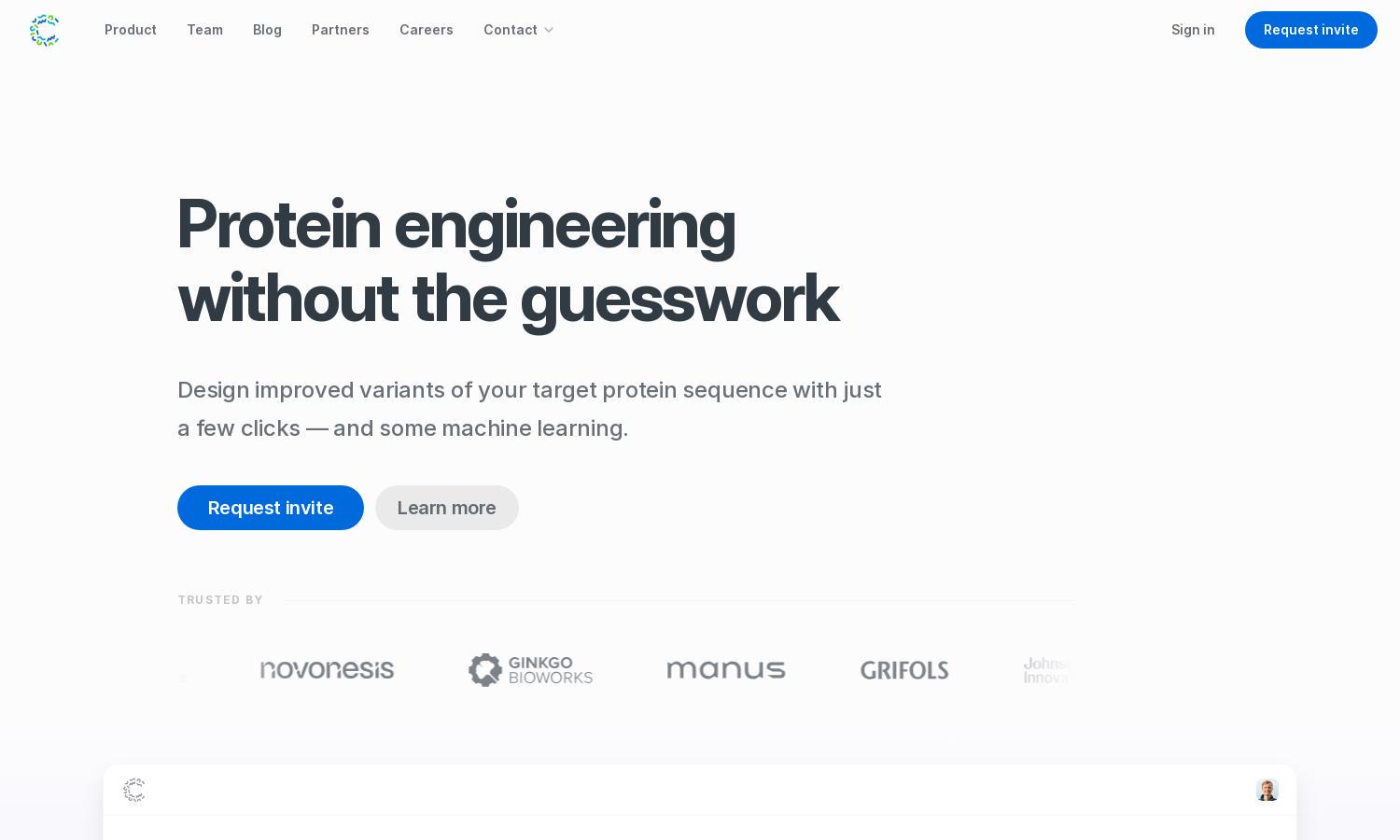Cradle

About Cradle
Cradle is a pioneering platform designed for biotech teams seeking to revolutionize protein engineering. By leveraging advanced machine learning techniques, Cradle allows users to generate optimized protein variants efficiently. With a user-friendly interface and secure data management, Cradle significantly reduces time-to-market and enhances research outcomes.
Cradle offers a flat annual subscription model, allowing users to access advanced protein design tools without hidden fees. This straightforward pricing encourages biotech teams to enhance their productivity without financial stress, providing a clear pathway for growth and innovation in protein engineering.
Cradle features an intuitive user interface that prioritizes user experience, making protein design straightforward. The layout is clean and easy to navigate, enhancing accessibility. Unique functions like rapid sequence generation and performance score predictions distinguish Cradle, facilitating seamless user engagement and productivity.
How Cradle works
To get started with Cradle, users simply set up their assays and objectives by inputting their project goals. Once established, users can generate protein sequences using machine learning algorithms, test these in the lab, and import lab results for further optimization. This streamlined process enables users to enhance their projects seamlessly while benefiting from Cradle's intelligent learning capabilities and performance predictions.
Key Features for Cradle
Machine Learning Integration
Cradle’s integration of machine learning transforms protein design by enabling quick generation of optimized variants. This advanced feature helps researchers gain insights into sequence performance, facilitating high-throughput testing and efficient iteration. Cradle is revolutionizing the way biotech teams approach protein engineering projects.
Data Privacy and Security
Cradle emphasizes data privacy with robust security measures. Users retain full ownership of their sequences and experimental data, ensuring confidentiality. This commitment to user privacy is a key feature that adds significant value, making Cradle a trusted partner for biotech research and development.
Multi-Property Optimization
Cradle uniquely allows users to optimize multiple properties of proteins in a single round. This innovative feature saves time and enhances the efficiency of experiments, as it eliminates the need for sequential testing. By facilitating comprehensive assessments, Cradle accelerates the development of biotechnological solutions.








